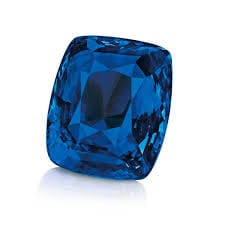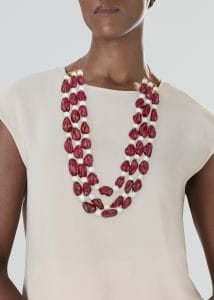Over the past six months, the market for important gems and jewelry has been marked by several significant auction sales, particularly at major houses like Christie’s. The most notable sales often involve rare, large, and historically significant pieces.

Here are some of the key highlights from the last six months:
- Christie’s Magnificent Jewels Auctions: Christie’s has had a particularly strong showing. Their “Magnificent Jewels” auction in June 2025 achieved a total of $87.7 million, setting a record for the highest-grossing multi-owner jewelry auction in the Americas.
- The Marie-Thérèse Pink Diamond: This was the star of the June auction. The 10.38-carat fancy purple-pink diamond, mounted by JAR, sold for a record-breaking $13.98 million. It was rumored to have ties to the French royal family, which added to its allure.
- The Blue Belle Sapphire: Another top lot from the same auction was this 392.52-carat Ceylon sapphire, which sold for $11.3 million. It is considered one of the largest natural sapphires ever sold at auction.
 Mughal Jewels: A collection of historic Mughal jewels from a royal family sold for a total of $14.8 million. A carved emerald necklace from this collection fetched $6.2 million, and a multi-gem and emerald necklace sold for $5.55 million.
Mughal Jewels: A collection of historic Mughal jewels from a royal family sold for a total of $14.8 million. A carved emerald necklace from this collection fetched $6.2 million, and a multi-gem and emerald necklace sold for $5.55 million.- Geneva Auction: In May 2025, a Christie’s auction in Geneva realized over $72 million. A 6.24-carat fancy deep blue diamond by Boucheron was the top lot, selling for over $12.7 million. A 10.18-carat Burmese ruby also sold for over $4 million.
Market Trends: Beyond specific sales, the overall market has shown a few key trends:
Colored Diamonds and Gemstones:
There is a continued and growing demand for fancy-colored diamonds, such as pink, blue, and yellow, as well as for high-quality colored gemstones like rubies and sapphires.
- The luxury jewelry market is currently characterized by several key trends, moving beyond traditional sales metrics to reflect shifts in consumer preferences and investment behavior.
The Rise of Colored Diamonds and Gemstones
A significant trend is the burgeoning demand for fancy-colored diamonds and high-quality colored gemstones. While the colorless diamond has long been the pinnacle of luxury, buyers are now increasingly seeking out unique and rare hues like pink, blue, and yellow. This demand has been fueled in part by the closure of major mines, such as the Argyle mine, which once produced over 90% of the world’s pink diamonds. This scarcity has positioned these stones as highly sought-after investment assets.
Beyond diamonds, the market for colored gemstones, particularly rubies and sapphires, is experiencing a surge. These stones are gaining popularity for both their beauty and their value as a tangible asset. High-net-worth clients see them as a way to diversify their portfolios and hedge against market uncertainty. Ethical sourcing is also a growing priority for consumers, who are increasingly requesting transparency regarding a gemstone’s origin and treatment.
The Value of Provenance and History
Jewels with a strong, verifiable history or provenance are consistently commanding exceptional prices at auction. Collectors are willing to pay a premium for pieces with a notable past, whether they belonged to a famous individual or a significant private collection. This trend underscores a desire for not just the object itself, but for the story and legacy it carries. The history attached to a piece transforms it from a mere adornment into a unique, collectible work of art.
The Performance of Signed Jewels
The market for signed jewels from renowned houses is performing exceptionally well, particularly at high-end auctions. Brands like JAR, Van Cleef & Arpels, and Cartier have cemented their status as market leaders. The incredible success of pieces like the JAR “Apricot Blossom” bangle, which sold for nearly ten times its pre-sale estimate, highlights the immense value placed on the craftsmanship, artistry, and prestige of these established jewelers. The name of the designer or house serves as a mark of quality and a guarantee of both artistic and investment value. These pieces are seen as reliable, high-performing assets that stand the test of time and market fluctuations

 Mughal Jewels
Mughal Jewels